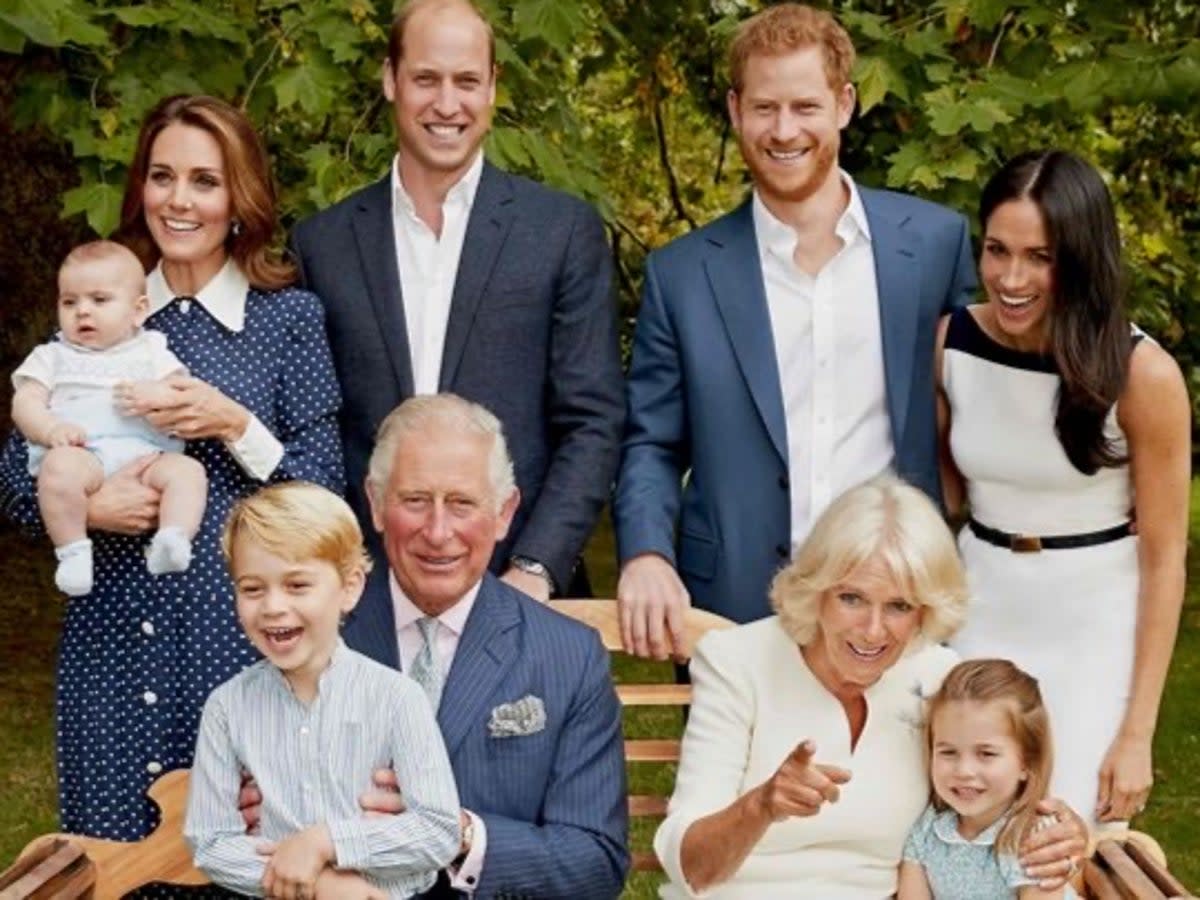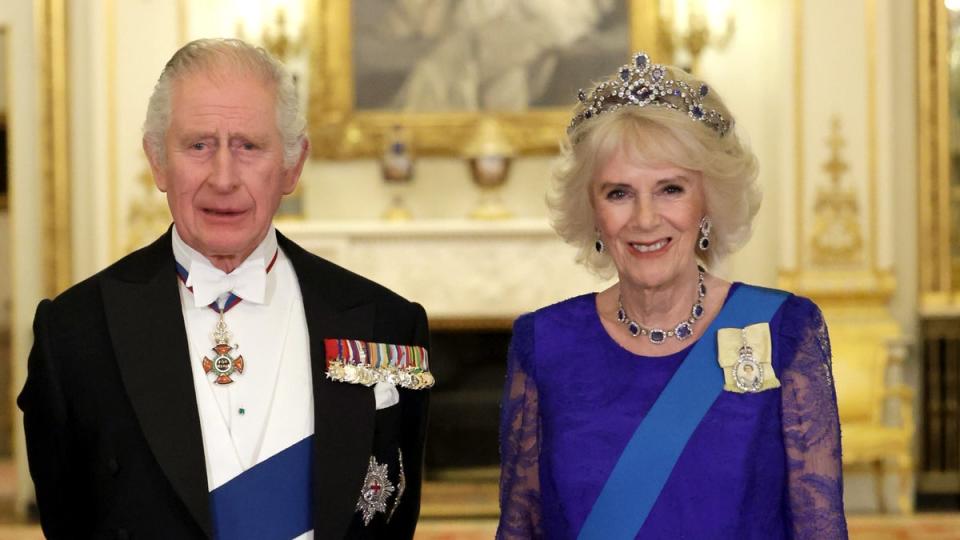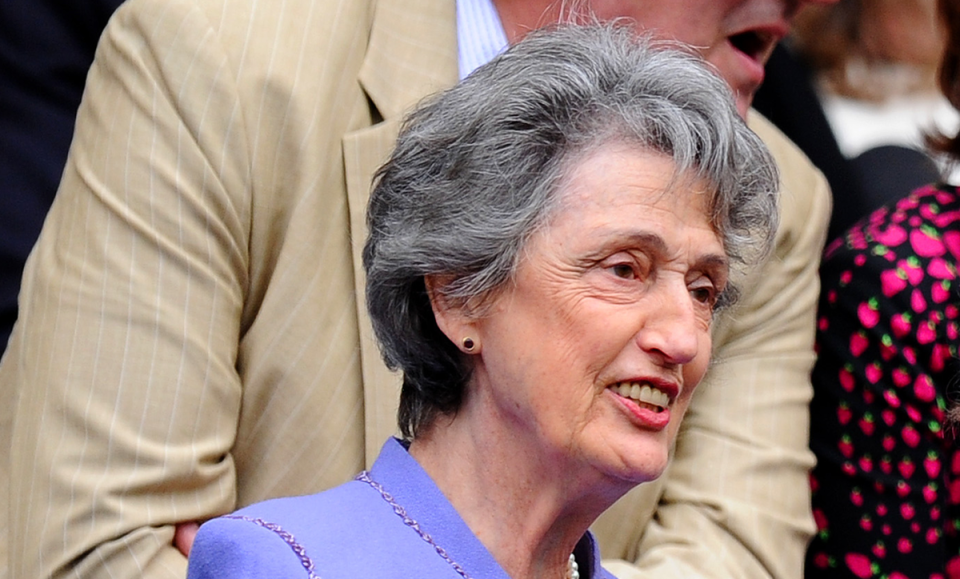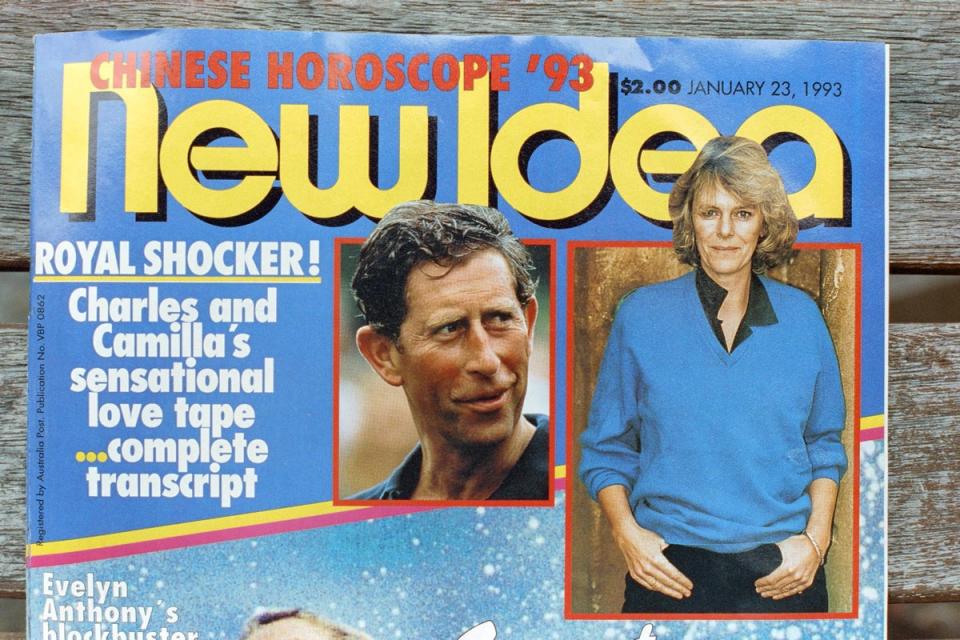Voices: Has the royal family reinvented the royal family?

There’s a photo taken a few years ago, in slightly happier times, of the then Prince Charles, Camilla, Harry and Meghan, Wills and Kate, and the grandchildren. Camilla is pointing at the camera, and little Princess Charlotte is giggling. Prince George is on his grandad’s knee. It’s all very sweet, and falls cosily into a long line of such portraiture.
It also strikes one in a different way, though, because, to the casual or younger observer, it looks very much like Camilla is the matriarch in the image. To those who can remember her, it feels like Diana “should” be there, but of course, she cannot be.
It didn’t need to be a conscious act of usurping her, and no doubt Camilla dotes on them all, but it was a manifestation of something the royals are good at – reinventing themselves and, if you will, re-idealising themselves as an idealised family.
Looking again at the picture, the obvious next step has already been taken by the Sussexes and the palace collectively, which is to concentrate public duties and attention on the King and the Prince of Wales’s families, with Princess Anne, Prince Edward and Sophie, Countess of Wessex, doing a bit more to make up for the loss of Harry, Meghan and, in disgrace, Prince Andrew. Likely for the rest of the reign, the Super Seven adults and the three kids will be the functional royal family – with just the three divorces between them.
I wouldn’t say Diana has been airbrushed out of history by a wicked stepmum/stepgran because that’s grotesque. But they’ve had to make the most of their new family circumstances, which, after all, reflect the increasingly varied and complicated family lives of the people they purport to reign over. Britain is a land of unmarried “partners”, stepbrothers and half-sisters, stepdads and Dutch uncles.
The royals had to give up on trying to set an example of an ideal “nuclear family” when they all started getting divorced, and the most intimate details of their private lives were being freely printed in the newspapers. They’ve had to adapt. Diana has naturally faded as she recedes into history – few under the age of about 30 will have much first-hand memory of her, and fewer still can recall her doomed fairytale wedding to the Prince of Wales in 1981.
The recent episodes of The Crown, though a bit of a historical mash-up, remind us that not so long ago, Charles was a figure alternately loathed and pitied because of the way his marriage to Diana broke up. And, especially after the latter’s death, so was Camilla. The Queen Consort was perceived as an almost mythically wicked figure. Yet, through careful PR and delicate coaxing of the late Queen, Charles and Camilla were eventually allowed to marry, become rehabilitated and, now, become King and Queen at the centre of a family that’s had more than its share of sordid scandal. It has been quite a recovery.

But, after Diana perished in that car accident in 1997, it might have all been very different. Charles, and Diana for that matter, were locked into a convention, frayed even by the 1980s, that royals didn’t commit adultery, didn’t get divorced and lived blameless lives of virtue and stolid, homely British values. It was always nonsense, if we recall the colourful, decadent lives of the Prince Regent and Edward VII. But there was a longish period around the middle of the last century when such a fantasy was fostered and fitted extraordinarily well with the extreme social conservatism, indeed repression, of the era.
The public didn’t know, for example, that their corpulent King Edward, whose waist peaked at 70 inches, had had a specially reinforced "sex chair" made for him the better to enjoy his visits to the brothels of Paris.
As with so many things, it was King George V who pioneered this new model of the monarchy. Over a quarter of a century after he succeeded his dissolute father, Edward VII, he projected the image, well-founded in reality, of a solid family man, ex-Royal Navy, of limited decidedly non-intellectual interests, and who was never happier than when tending to his extensive collection of postage stamps. His only eccentricity was a preference for having his trousers pressed with the crease at the sides rather than the front.
Even if he had vices (there’s not much even in the way of rumour) the press wouldn’t have reported them. He was a dull man, but a PR genius. He literally invented the “House of Windsor” in 1917, to camouflage the family’s Germanic name of Saxe-Coburg-Gotha during the First World War. He projected the air of a devoted husband to Queen Mary, and a loving father and grandfather (though he actually terrified his sons and gave George VI his famous stammer).
He turned royal marriages from private ceremonies to public spectacles, with the waving from the balcony at Buckingham Palace and horse-drawn carriages and all that. He made the first radio broadcast by a monarch, at Christmas 1932, to the whole empire, embracing the new technology of the time. He confected the silver jubilee of 1935 which cemented the national tradition of such landmark anniversaries established by Victoria. And he gave the palace the new grand facade we see today, with the handy balcony.

The harmonious image, melding majesty and domesticity, was rudely interrupted when he was succeeded by his wastrel elder son Edward VIII in 1936, who had spent years chasing after married women to the horror of his parents, and preferred life with an American divorcee to stultifying ceremonials. Edward’s abdication was a low point, and a dangerous one, precisely because this ideal of family life was being challenged by the King himself, who couldn’t care less about whether his lovers were single, married, divorced or anything else; nor what his prime minister’s opinion happened to be.
But George VI, his Queen Elizabeth and the little princesses, Elizabeth and Margaret Rose, restored this idea of the perfect family as an example to the nation. Reinforced by a squad of ponies, racehorses and corgis, they didn’t exactly scream “this is how you lot you should live” because it was accepted. Crown and people communed through a vision of the family life of the King, who gave the impression he’d like nothing more than to be a Norfolk country gent.
The Queen and Prince Philip, over a 70-year-plus marriage, did the same. In her speech to celebrate her silver wedding anniversary in 1972, the Queen declared: “If I am asked what I think about family life after 25 years of marriage, I can answer with equal simplicity and conviction, I am for it.”
Whatever the ups and downs of the Queen’s relationship with the Duke, sadly this happiness in the family wasn’t shared by her sister, Margaret, or three of her four children, all divorced long before they got as far as their own silver wedding anniversaries. And that was the challenge and the choice. They could either try and keep up the pretence that they were somehow superior because of their impeccable private behaviour, leading by example, or somehow come to terms with the fact that they were just as frail as their subjects.
What they also seem still determined to do is to place the institution first – leastways where it doesn’t impinge on their private lives. It is the same ruthless streak that allowed George V to leave his cousin, Tsar Nicholas II of Russia, to his fate at the hands of the Bolsheviks. It allowed George VI to marginalise his – until then – much-admired brother Edward VIII, and push him and Wallis into exile. It meant the Queen deprived Andrew of most of his military titles, public role and even from using his HRH status.

It allowed the House of Windsor to let the memory of Diana wither, and eventually break with Harry and Meghan. Perhaps that tragic rupture will be more complete when Harry’s book Spare is published in January. Lately, the palace disowned 83-year-old retainer Lady Susan Hussey over her racist behaviour, and William issued a stern public statement effectively denouncing his elderly godmother.
Apart from that unpleasant business with Oliver Cromwell in the 17th century, they have reigned over England and, later, the UK for a millennium, and they seem to have an instinct for survival. It’s been seen in all its unflinching glory in recent days. Had they tried to keep Lady Susan around, the pressure to drop her would simply have grown, the rows become more divisive and the collateral damage (consider the hashtag #racistroyalfamily) grown even more serious.
To keep up to speed with all the latest opinions and comment, sign up to our free weekly Voices Dispatches newsletter by clicking here
After Meghan’s accusations about a family member asking about the skin colour of her baby, race is a toxic issue. There’s no reason to doubt that William is appalled by it, and his ad hoc reply to a reporter after the Oprah Winfrey interview that the family is “very much not” racist was sincere, but the incident and hurt caused to Ngozi Fulani has eroded a certain amount of trust about the institution’s nature. The court remains a remarkably undiverse body of people, which can’t help, even if some of The Firm seem fairly “woke” in outlook.
There’s more work to be done there, just as there is to maintain the modernised family image. Happily, for Charles and Camilla, their relationship survived and they lived long enough to allow for what was once their scandalous “Tampongate” adultery to evolve into a love story and to be accepted in a nation where social and moral standards have radically altered. No longer are divorcees shunned, or single mothers shamed, or couples disdained for “living in sin”.
Family life in Britain was never as regularised and conventional as it was made out but nowadays, people don’t even try to pretend and no longer have to endure unhappy relationships in the name of God or duty. The latest iteration of the royal family is equally a more complex affair, with soap-style filial tensions and relationships that have their difficulties, and strange rumours that buzz around social media. Once again, the royal family, or families, reflect the lives of the people, untidy, messy and unresolved as they are.

 Yahoo News
Yahoo News 
